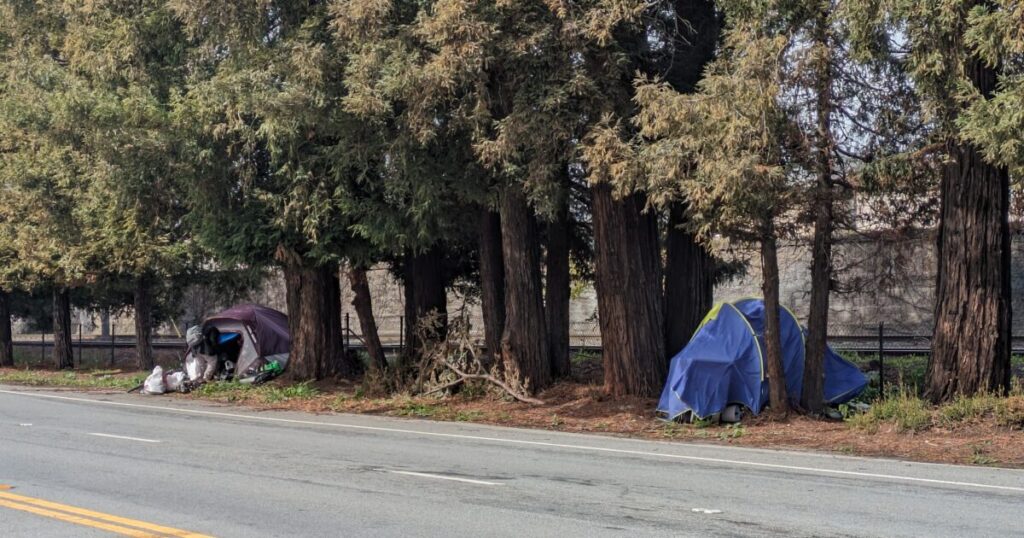Gov. Gavin Newsom wants to ban homeless encampments across California, echoing San Jose Mayor Matt Mahan’s goal to end the era of tents and camps lining city streets, parks and waterways.
In Newsom’s proposal announced Monday, he laid out a blueprint for cities to make it illegal to camp on public property for more than three consecutive nights, to prohibit sitting, sleeping or lying on sidewalks and streets that would hinder passage and to make it unlawful to build makeshift sheds on public property. While the governor can’t make cities adopt the proposals, the announcement was paired with the release of $3.3 billion of Proposition 1 funding, approved by voters in 2024 for treatment and housing for those with mental health issues. The state has also poured more than $850 million into helping cities address encampments.
“It is time to take back the streets,” Newsom said at a news conference. “It’s time to take these encampments (down) and provide alternatives.”
San Jose has already been cracking down on homeless encampments and tightening laws around sleeping in public areas.
The city extended the hours homeless people are prohibited from sleeping and sitting on sidewalks by an extra two hours, allowing police to cite or arrest anyone caught sleeping from 8 a.m. to 12 a.m. San Jose has increased its no-encampment zones from three to at least 13 areas and has cleared 12 miles of encampments along Coyote Creek. The city has increased its encampment removals, conducting 530 sweeps and removing more than 6.5 million pounds of trash this fiscal year. Under the Oversized and Lived-In Vehicle Enforcement program, the city has been instituting temporary RV bans across 30 highly impacted zones. Fifty more sites are planned for the next fiscal year.
It’s not clear if Mahan intends to implement more policies to reduce homeless encampments as a result of Newsom’s announcement, but he is eager to receive the state’s help in funding treatment beds.
“It’s great to have the governor pushing alongside us to end the era of encampments,” Mahan told San José Spotlight. “To get the job done, we will need his leadership to ensure that every city provides its fair share of shelter options and every county does the same for mental health and addiction treatment beds. Without sufficient beds and a requirement that people use them, we end up spending millions of dollars simply shuffling vulnerable people across jurisdictional lines.”
Homeless advocates see encampment bans as a backwards approach to truly solving the homelessness crisis.
“It’s not going to solve the problem at all,” Todd Langton, executive director of nonprofit Agape Silicon Valley, told San José Spotlight. “It’s going to cause more dysfunction, more pain and suffering, and early deaths. Unhoused individuals are going to go from one place to another.”
The city’s increased sweeps have displaced people, pushing them into neighborhoods and forcing them to start over again. After sweeping a large RV encampment near Microsoft’s future data centers, RVs moved to a nearby school and park, according to Councilmember David Cohen.
Since the city has been upping its encampment sweeps, Langton said he’s been getting three to four phone calls a week from people in need of housing. Last year, he only got one to two calls a month, and spent $400 to $500 to put people up in hotels through grants and donations for his organization. Now Langton’s spending that amount every week and is having to turn people away. It’s unsustainable with grant funds dwindling, he said.
“Where do (Newsom and Mahan) expect them to go?” Langton said. “The suffering, the anxiety, the depression, has just skyrocketed because they feel they’re being harassed. They have no stability. They’re losing everything that they have, and they’re sleeping without a tent or a tarp.”
Contact Joyce Chu at [email protected] or @joyce_speaks on X.


